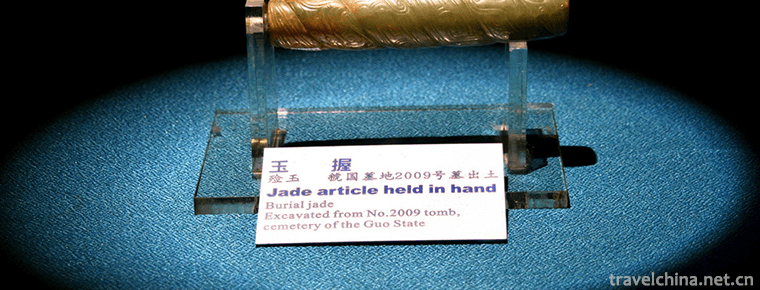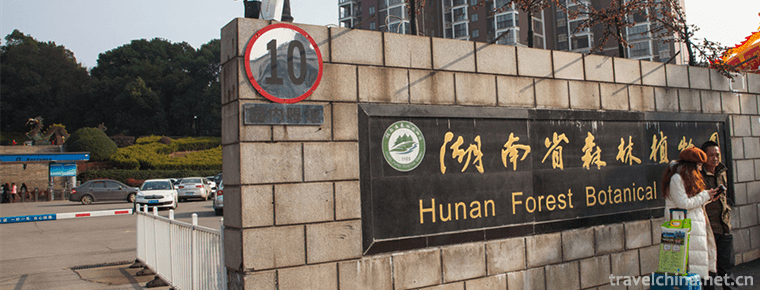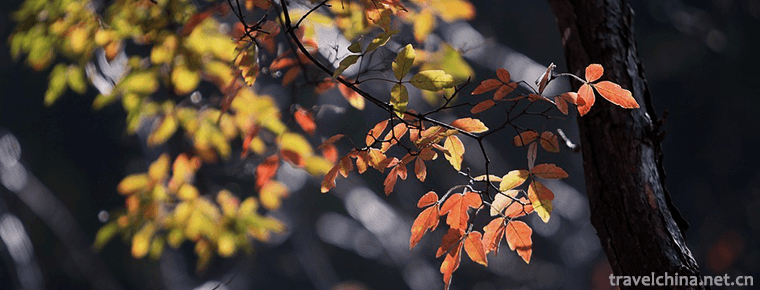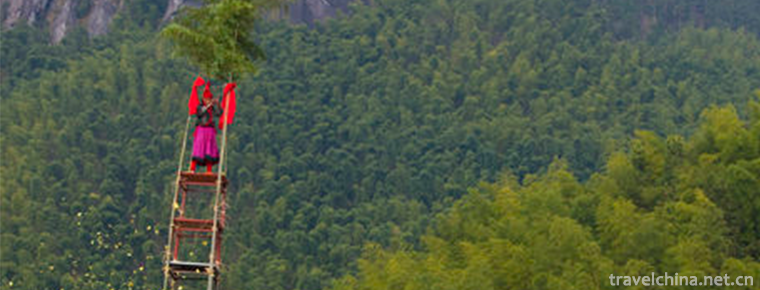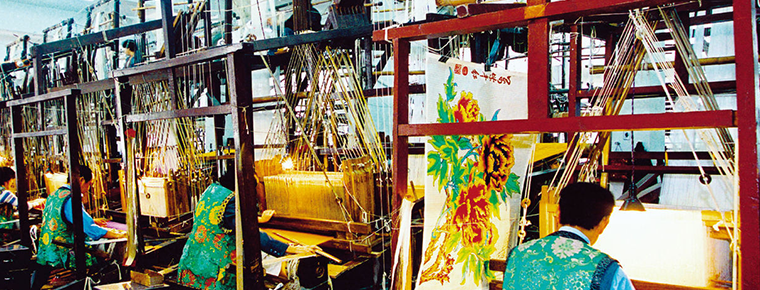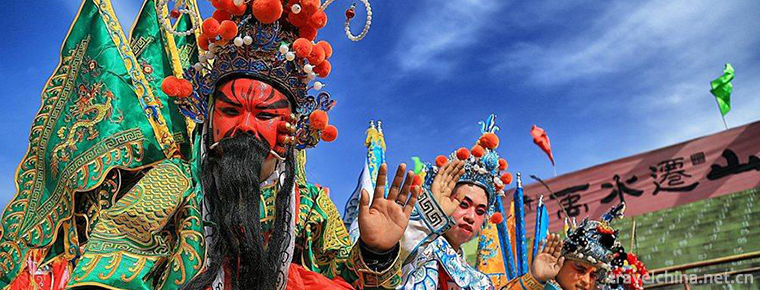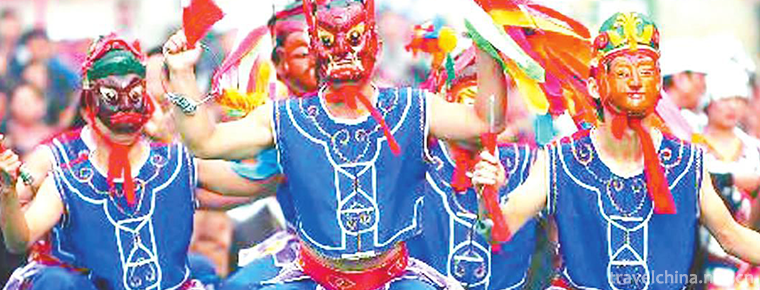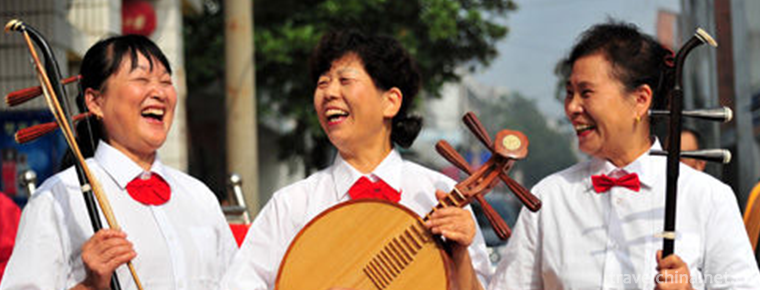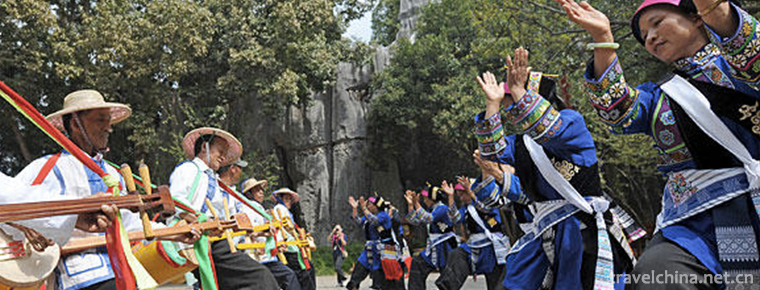Jiayin Dinosaur National Geopark
Jiayin Dinosaur National Geopark
Jiayin Dinosaur National Geopark, the first place where dinosaur fossils occurred in China, is named for the dragon. The fossils unearthed here have been packed into 10 dinosaur skeletons. Two years ago, many paleontologists and geologists in Jiayin discovered new large-scale dinosaur fossils. Apart from onychosaurs and virtual bone dinosaurs, they also discovered fossils of onychosaurs, dinosaur skin and dinosaur footprints, which made the fame of "home of dinosaurs" even more distant.
Traffic information
Self driving
1. Jiayin County: County Government - S312 - S204 - S311 - Terminus (left side of road).
2. Yichun urban area: from the urban area to S204, from the starting point to the east, drive 150 meters, turn left ahead into Kongsong Road, drive 200 meters along Kongsong Road, turn right into Toulangshan Street, drive 210 meters along Toulangshan Street, turn left into Shanzhen Road, drive 700 meters along Shanzhen Road, turn right, drive 10 meters, turn left into S204.
3. Luobei County: Drive 4.3 kilometers from Luobei County Road into S312, 5.3 kilometers along S312 (via Mingshan Toll Station), turn left into S312, continue to drive 214.0 kilometers along S312, turn right into Shenzhou Dragon Road, 0.9 kilometers along Shenzhou Dragon Road, turn left into Dinosaur Avenue, 136 meters along Dinosaur Avenue, and reach the terminal.
Passenger car
Take the train from Yichun to Wuyiling, then change from Tangwanghe Station to Jiayin County. After arriving at Jiayin, you can take a taxi to the park.
brief introduction
"Mountains are not high, fairies are names; water is not deep, dragons are spirits." There is such a mountain on the remote border between China and Russia in Heilongjiang.
Longgu Mountain, the famous mountain of dragon. The Longgu Mountain is small and even ugly, but it is the earliest place in China where dinosaur fossils were found and is known as the "home of dinosaurs". In the past, the earliest assembled dinosaur fossil in China, the "first dragon in Shenzhou", was unearthed here. Today, it is no longer desolate and desolate, but a tourist resort, Jiayin Dinosaur National Geological Park in Heilongjiang Province.
geographical position
There is a Longgu Mountain in Jiayin
Longgu Mountain in Jiayin County is located at the edge of low hills and hills in the north of Xiaoxing'an Mountains in Heilongjiang Province. Geology, geomorphology, physical geography and the border area between China and Russia are advantageous and have good conditions for the development of tourism resources. Two thousand and one
In 1997, the Ministry of Land and Resources approved the establishment of Heilongjiang Dinosaur Fossil National Geological Park. From Yuliangzigou in the west to Taipinggou River in the East and from Yuliangzigou in the south.
Liaoyuan Village is bounded by Heilongjiang Province in the north. It is 11 kilometers long and 3 kilometers wide in the East and west, covering an area of 38.44 kilometers.
structure
Longgushan belongs to Jiayin depression zone in regional structure, which is situated on the base of metamorphic rock series of Mesoproterozoic Heilongjiang Group in Laoyeling massif, and the depression extends north-south to Russia. During Mesozoic-Cenozoic, Cretaceous and Tertiary were deposited in the sag basin.
Tertiary and Quaternary strata, dinosaur fossil groups occur in continental clastic sedimentary rocks in the middle and late Late Cretaceous, and the strata are Yongancun Formation and Taipingcun Formation.
The sandy conglomerate, feldspar quartz sandstone, siltstone, conglomerate sandstone and mudstone of the Heyuliangzi Formation are composed of sand conglomerate, conglomerate and gravel of the Yuliangzi Formation.
Dinosaur fossils are most abundant in sandstone. The colors of these rocks are quite mixed, such as grey, green, white, yellow, black, blue, green, etc.
The rocks have also left sprays, whirlpools and tidal peaks.
The ripple still has the shadow of sunshine and the clear wind of Changhong. It also leaves the remains of animals and plants.
Magical Dinosaur Fossils
As the earliest province to discover and excavate dinosaur fossils in China, Heilongjiang Province buries a large number of dinosaur fossils underground. Jiayin County Longgu
There are no less than 10 dinosaur fossils unearthed from the mountain. According to experts'investigation, Longgu Mountain is a large group of dinosaur tombs, with abundant dinosaur fossils. It is estimated that there are more than 100 dinosaur fossil skeletons buried in Longgushan area. In addition to dinosaur fossils, precious fossils such as fish, turtle, clear, crocodile have also been found. In the sandy shale beneath dinosaur fossil horizons, abundant plant fossils have been found, such as pine, cypress, ginkgo, cycad, fern, Platanus acerifolia, rhombus microphylla, kunmullan-like tree and so on. Invertebrachiopods include brachiopods, ostracods, phyllodes, bivalves and so on, which can be roughly divided into 23 biological assemblage belts as early as possible.
formation
As early as 100 million years ago, the vast continental platforms in the eastern part of Heilongjiang Province suffered from long-term erosion and folding, and began to produce faults, forming some fault basins and lakes. A large lake was formed near Jiayin. Various types of fluvial facies, deltas and lakes developed in the surrounding area.
Phase. This large inland freshwater lake is characterized by a closed bay. At that time, the climate was wet, and there were many aquatic plants growing on the lake surface and bottom, as well as a large number of fish, snails, mussels, turtles, turtles and so on. All kinds of creatures are chasing growth, full of vitality and happiness everywhere. later
The vicissitudes of life have changed dramatically. Material is exchanged for natural selection, and the fittest are eliminated. The simplicity and complexity have changed with time. By the end of Cretaceous, with the movement of the earth's crust rising and falling, the living things around the Great Lakes were decreasing, the sediment content in the lakes was increasing, the area of lake water was increasing from large to small, and the living things in the lakes were growing, flourishing, declining and dying. The natural environment had undergone tremendous changes. Maybe it's the accelerated separation and drift of continents and the complicated circulation of oceans; maybe it's the volcanic activity that pushes back the shallow sea of the past; maybe there are many mountains around the Pacific Ocean that make the climate of the earth colder; maybe it's the replacement of plants, where delicious gymnosperms are replaced by unpalatable angiosperms. Over the last 30 million years of the late Cretaceous, the number of dinosaurs continued to decline, and eventually all of them were extinct. The special geological environment of Jiayin provided favorable conditions for the formation and preservation of Jingshi during the extinction of dinosaurs.
value
The dinosaur fossils in Longgu Mountain of Jiayin County are buried in large quantities, with many groups, complete varieties, the most complete storage, the most abundant information and wide distribution.
The unearthed fossils of animals and plants rank first in the contemporary strata in China and are rare in the world, filling in the gaps in the development history of animals and plants in the Late Cretaceous in northern China. It has immeasurable value for the study of late Cretaceous paleogeography, paleotemperature, paleoclimate and paleoecological environment in China and Heilongjiang Province. According to experts, their research value is higher than the dinosaur fossils unearthed in Lufeng, Yunnan Province and Zigong, Sichuan Province. The former represents the rise of dinosaurs, while the latter represents the flourishing period of dinosaurs. Only the dinosaur fossils unearthed in Jiayin represent the extinction period of dinosaurs. So it's not just about finding 6500 for people.
The reasons for the extinction of dinosaurs and other living things on the earth in about ten thousand years provide important clues and basis, and will also help mankind to protect themselves, protect the environment and predict the future.
However, in the desolate and ignorant years of old China, the dinosaur fossils exposed to the Heilongjiang border were stolen and dug by the Tsarist Russia several times to give "fear"
The land of dragons has been humiliated indelibly.
Longgu Mountain is close to the river. The natural vegetation is seriously damaged due to the long-term erosion of the river. Soil erosion, bank collapse, landslide, debris flow
Such disasters occur frequently, all kinds of paleontological fossils are weathered into gravel and soil. Some of them were directly swept away by the river; others were picked up and scattered among the people by fishermen and tourists. Especially in the flood season, the water level of the river is more than 5 meters above the normal year, and the invasion of fossil resources is more serious. Fossils
Other reasons for the destruction of resources are: local fishermen weed trees, build shanty houses, peel off the deeper rock and soil layers, and can see dinosaur fossils. Dinosaur fossils were removed, but their vegetation did not recover. As for how many such fossils have disappeared, it is impossible to count them. The resulting losses are also incalculable.
Beautiful natural scenery
Longgu Mountain is not only rich in dinosaur fossil resources, but also charming in natural scenery. It is famous for its secluded, strange, dangerous and beautiful scenery, which can be called the North.
Xinjiang is a famous scenic spot. Get off the bus and go northward, through the jungle, climb the dangerous slope, cross the stream, cross the single wooden bridge, travel three miles, and then come to the cobbled crescent beach, which is several hundred meters round. Looking at the river, thousands of waterfowls and birds are foraging and playing in the nearby waters. Here you can also see the abundance of eagles.
Posture, the beauty of cranes, swans, thunderbirds, Mandarin ducks, ducks, magpies, red-billed gulls and so on.
Up the steep steps, turn three corners, climb more than a hundred steps, and then come to the excavation platform. Standing on the platform, looking up at the peak, vine and pueraria climbing, shrub hazelnut, solitary pine alone, ancient cypress hanging obliquely, mountains folded Zhai, suspected not dust. Overlooking the mountain, the river flows eastward slowly. Overlooking the other side, the sky is high and the earth is broad, fertile fields are thousands of miles, Pingchou ancient wind, houses are in blocks, boats are like mud balls.
When the river opens in spring, the spring water roars and the sky breaks apart. Longgu Mountain in autumn, the sky is washed, the sun is shining, the wind is blowing and the autumn insects are chirping.
Especially in winter, thousands of miles of ice, thousands of miles of snow drift, silver wrapped in plain, all things carved with ice, exquisite, snowy, is really a fairyland on earth.


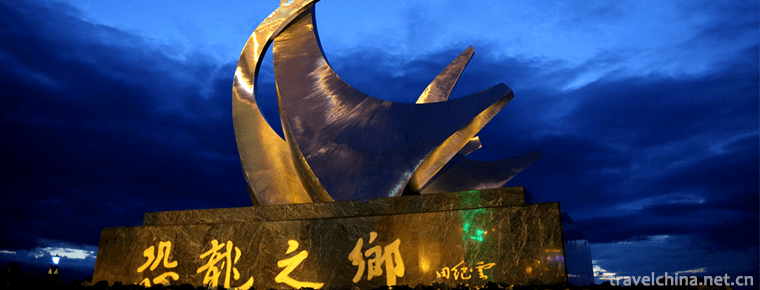
-
Kuanguo Museum
The Kuanguo Museum is a special museum built on the site of the Kuanguo Cemetery in the Western Zhou Dynasty, a national key cultural relic protection unit. It covers an area of 100,000 square meters.
Views: 205 Time 2019-01-13 -
Hunan Forest Botanical Garden
Hunan Forest Botanical Garden, also known as Tianjiling National Forest Park and Changsha Botanical Garden, was established in 1985 with the approval of Hunan Provincial People's Government and is und.
Views: 78 Time 2019-01-16 -
Songxian Tianchishan National Forest Park
The Tianchishan National Forest Park in Songxian County, Luoyang City, is located in Xionger Mountains, northwest of Songxian County, Luoyang City, with a total area of 1716 hectares and a forest cove.
Views: 133 Time 2019-02-13 -
Turn over to the nine floor
The Ninth Floor, also known as the Ninth Floor, is a traditional folk activity popular in northeastern Fujian and southern Zhejiang. It is mostly used in rituals such .
Views: 303 Time 2019-04-29 -
Gao Jia Opera
Gaojia Opera, a local traditional drama in Quanzhou City, Fujian Province, is one of the national intangible cultural heritage..
Views: 149 Time 2019-04-30 -
Lu Brocade Weaving Techniques
Lujin brocade weaving technology, traditional handmade brocade weaving technology in Juancheng County, Shandong Province, is one of the national intangible cultural heritage..
Views: 193 Time 2019-05-15 -
Folk fire Min Jian She Huo
Folk society fire is a kind of folk entertainment popular in China during the Spring Festival. It is widely spread in Shaanxi, Shanxi, Hebei, Henan, Liaoning and other provinces. On May 20, 2006, Folk.
Views: 154 Time 2019-06-05 -
Nuo opera
Nuo Opera originated from Fang Xiangshi's exorcism activities in Shang and Zhou Dynasties. After Han Dynasty, it gradually developed into a ritual ceremony with strong entertaining color and opera mus.
Views: 227 Time 2019-06-08 -
Qiang Nationality Year
The Qiang Year is a traditional festival of the Qiang people, also known as the Year of the Youth, which is held on October 1 of the lunar calendar every year. In Maoxian area, there are special regul.
Views: 179 Time 2019-06-10 -
Silk Bamboo in Yichang
Yichang silk bamboo, also known as "fine music", is the representative genre of folk instrumental music art in Yichang. It is mainly popular in Yaqueling and Longquan of Yiling District, and.
Views: 138 Time 2019-07-12 -
Trichord Dance of Yi Nationality
Trichord dance of the Yi nationality is a folk dance handed down from generation to generation by the people of the Yi nationality. Different areas or different tribes of the Yi nationality have diffe.
Views: 137 Time 2019-07-12 -
University of Chinese Academy of Sciences
University of Chinese Academy of Sciences ( University of Chinese Academy of Sciences Referred to as "National Science and Technology University", was approved by the Ministry of education. .
Views: 111 Time 2019-12-11
